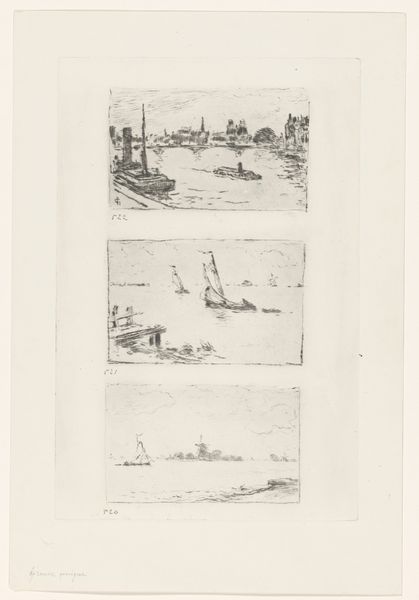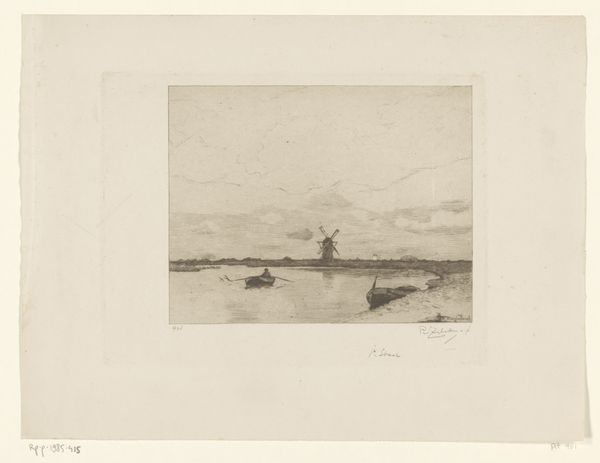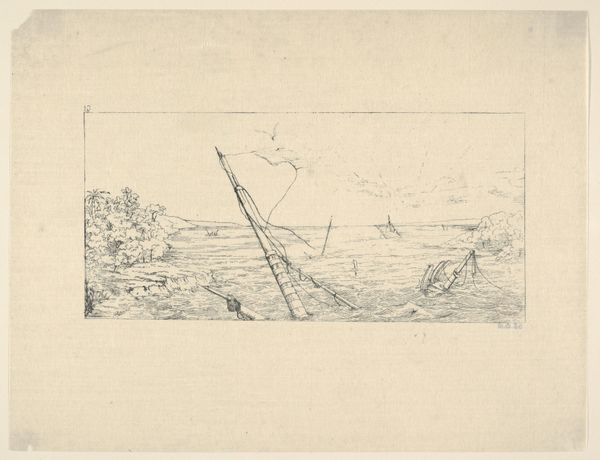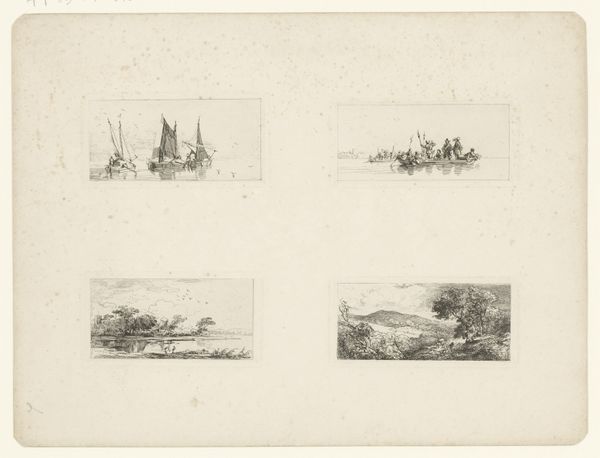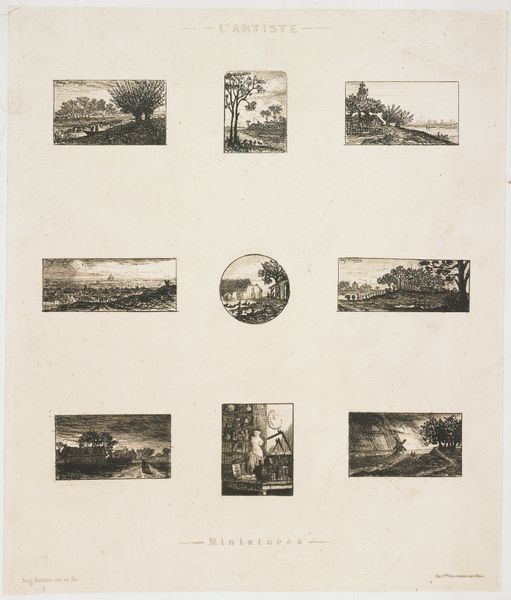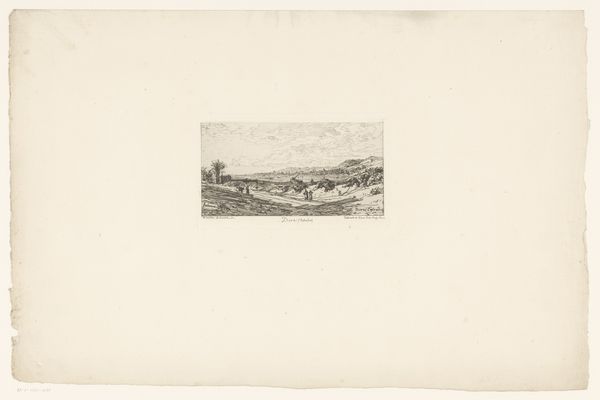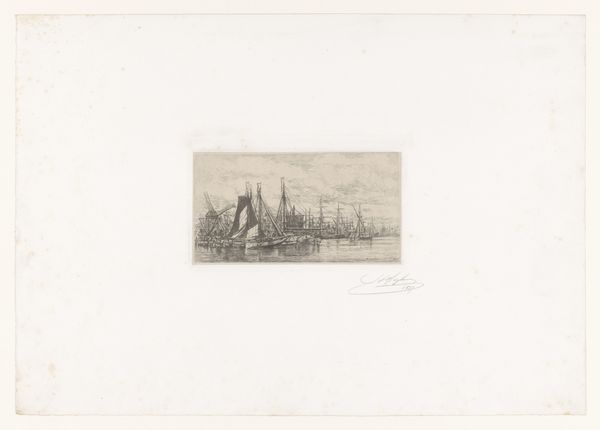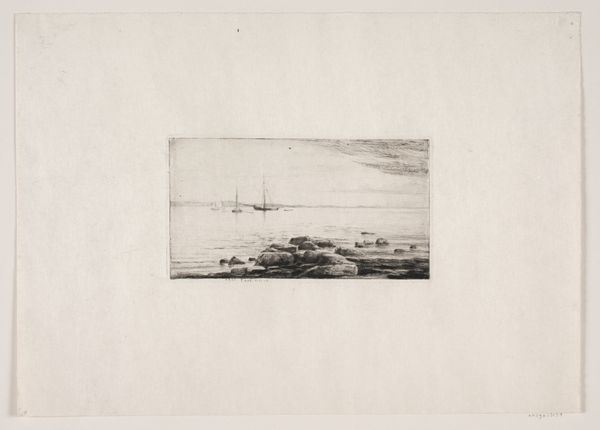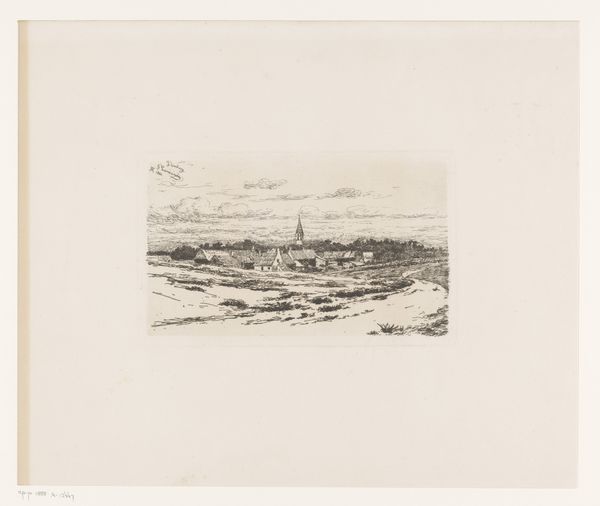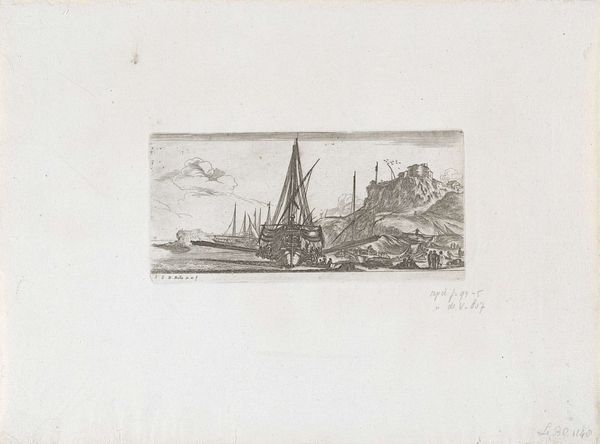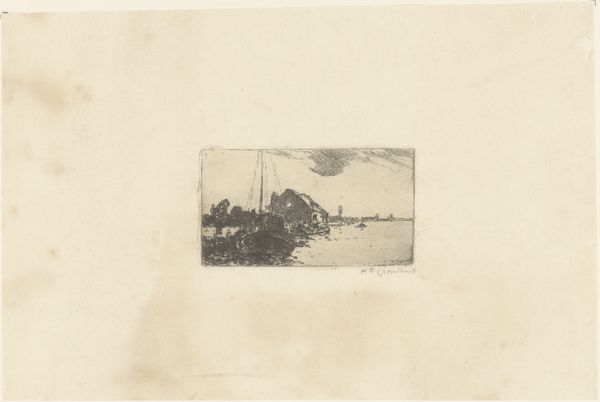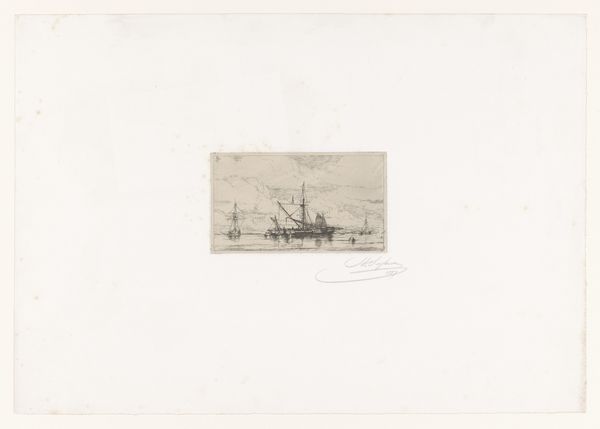
Dimensions: height 253 mm, width 155 mm
Copyright: Rijks Museum: Open Domain
Curator: This is "Drie zeegesichten," or "Three Seascapes," an etching dating from approximately 1860 to 1900, created by Johannes Arnoldus Boland. Editor: My immediate reaction is that they convey the immensity and capriciousness of the sea through simple compositions and masterful use of line. The stark contrast really accentuates that drama, doesn’t it? Curator: Absolutely. It's important to remember that etchings like this weren't produced in a vacuum. Think about the maritime industries flourishing during that period, the relationship people had with the sea and with sailing vessels – how reliant they were on shipbuilding, naval power and trade, fishing too... How do these things inflect what we are looking at here? Editor: True, we are not seeing mere artistic studies; these scenes are suffused with symbolism—boats standing in for ventures into the unknown and potentially treacherous landscapes. Curator: Etching as a medium democratized printmaking somewhat; cheaper, smaller, repeatable works allowed circulation in spaces other than galleries of fine art. Its affordances enabled a kind of visual discourse... the making of imagery as a communal practice. Editor: Note, too, how each of the three panels embodies a different facet of nature. The uppermost is tranquil, conveying placid light and open sky, the middle scene depicts rough open waters where the waves are about to overtake some boats, the third, land and a ship far off in the distance. The varying depth created in each is simply masterful, and, in terms of sequencing, has almost a cinematic effect. Curator: The level of detail is quite remarkable. And to see such dramatic changes in such intimate-scale pictures—it's interesting how such a tiny image could stand in for something so huge, literally and figuratively. Editor: Yes, despite the modesty of the dimensions, the emotional impact is huge. It is almost a miniaturized sublime. What an impactful use of simplicity to achieve complexity. Curator: And to reiterate the idea of production, a work such as this likely reached wide audiences who encountered seascapes like this daily. Thanks to affordable printed items, it became ubiquitous for citizens to have access to views of the sea they sailed daily on vessels manufactured through the same economic means as prints like this. Editor: Well, seeing these qualities makes me view the scenes a lot differently and appreciate the artist’s eye even more. Curator: Precisely—thinking through what that artist's labor contributed to helps clarify so much.
Comments
No comments
Be the first to comment and join the conversation on the ultimate creative platform.
